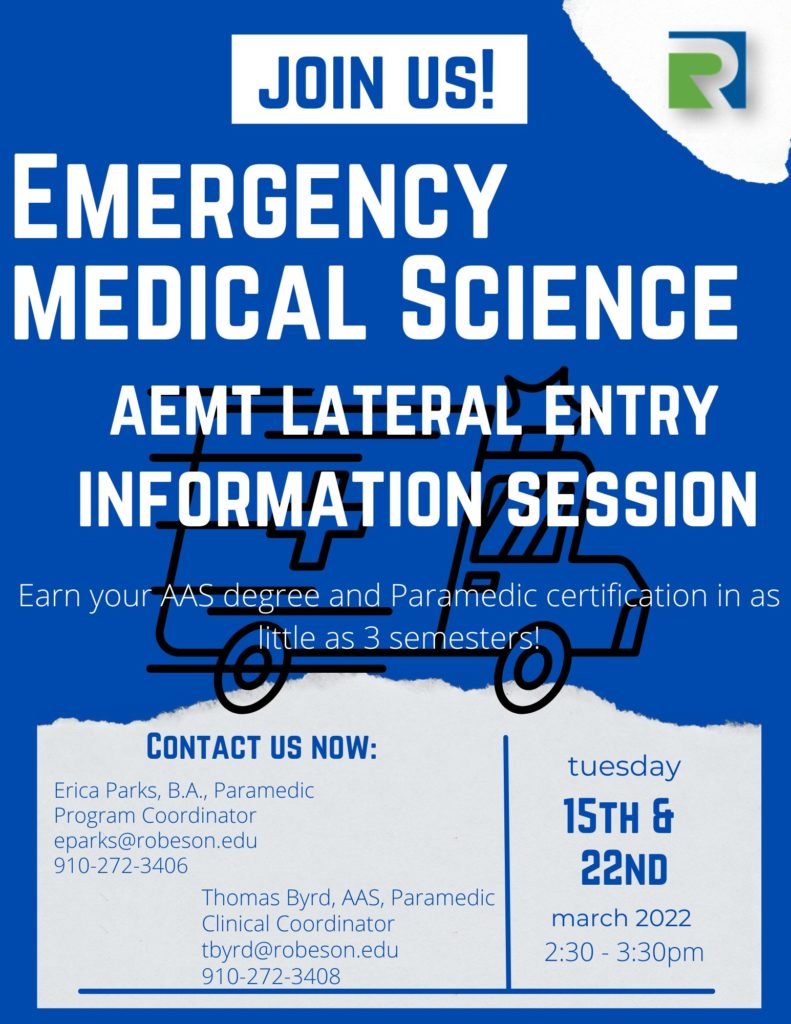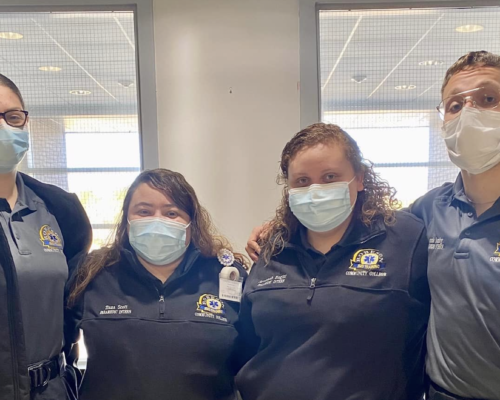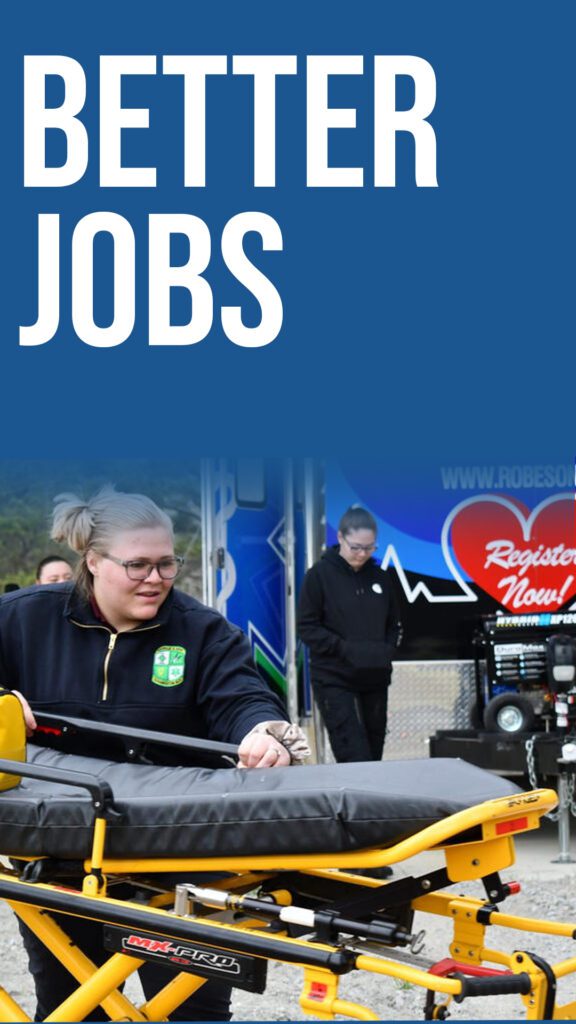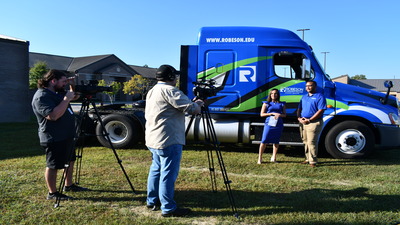
Robeson County gains 4 new EMTs; Shortage Remains
Robeson County has gained four new Emergency Medical Technicians.
Hailey Lowery, Tiana Scott, Savannah Hagins, and Ronnie Hamby completed and passed the EMT certification, which is just one step of the EMS program at Robeson Community College. These first-year students will test for their Paramedic certification upon completion of the associate degree program.
The four represent a minority of individuals who are choosing to answer the call to a life of public service as a first responder during a time when they are needed the most and are in short supply.
“There is a shortage because COVID has put a strain on EMS and healthcare as a whole,” said Thomas Byrd, the EMS Clinical Coordinator at RCC. “The pandemic, it was a whole lot at one time and it hit EMS staffing that was already running short.”
Nationwide and locally, shortages of emergency medical technicians and paramedics are creating unprecedented challenges. The staffing crisis worsened when the pandemic hit, as Byrd mentioned, leaving a crippling effect on an industry already struggling with high turnover rates.
What used to be unacceptable is becoming the reality.
Just last year FEMA had to step in to provide temporary relief for Robeson County, sending three ambulance crews to assist with COVID-related calls as it coped with shortages.
In more rural areas, the crisis is even worse, with ambulances often having to drive long distances to transport patients, prolonging emergency response times. With a shortage in staffing, many calls in these rural areas may go unanswered.
In Colorado, for instance, the fire department posted that the community cannot assume that an ambulance will be available for a call to service. In Montana, it was found that 34% of ambulances occasionally were unable to respond to calls.
Robeson Community College has sought ways to increase the pipeline of emergency service personnel. The college offers short-term training through its Emergency Medical Services program, which allows students to earn a host of certifications and credentials to become workforce ready, as well as several options through its associate degree program in emergency medical science.
One solution that has been discovered to get more individuals in the profession: Apprenticeships.
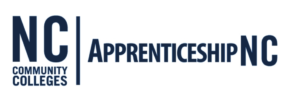
”We are partnering with Lumberton Rescue and Med1Plus to offer apprenticeships to address ways to increase the number of students enrolled and we will be meeting with Robeson County EMS soon to discuss starting an apprenticeship there,” said Thomas. “We currently already have two students enrolled in the program.”
ApprenticeshipNC is a program available through the North Carolina Community College System for businesses and organizations. Employers that have registered an apprenticeship through the NCCCS have seen a 170% return on investment, making it a win not just for the organization, but for the student, and in this instance, a win for the community-at-large as well.
“We are excited to grow and develop partnerships with local EMS agencies,” said Byrd. “With these partnerships, we hope not only to grow our program, but also mitigate the current shortage of EMS professionals in our local area.”
Byrd continues by saying, “Students get their tuition paid in full, and they get to earn a wage at the same time. It’s going to help the shortage because it will help students get the training they need and they will be more apt to stay if they have a job and their tuition has been paid.”
Although turnover has been high for EMTs and paramedics, it hasn’t all been caused by stress, but because the pandemic has opened up a lot more doors for those in the field.
“It’s actually a good thing because it is opening up the outlook of the profession,” said Byrd.
Hospitals that were running short on nursing staff have often turned to paramedics to fill in the gaps and to do the job at much higher wages.
“It used to be unheard of to hear of a travel EMT or a travel EMS, but it is happening,” said Byrd. “Many restrictions have been removed, allowing certified EMT and paramedics to travel from anywhere and make a lot of money, or you’ll find them working in emergency rooms, primary care… there are more jobs available in alternative settings, so that is taking them away from being on the ambulance.”
Bryd says being a part of EMS can be a rewarding experience and that it takes a special person to do the job.
“A lot of people wonder if they have made a difference, but EMTs, paramedics, don’t have that problem. They know they have made a difference with each and every call they take,” said Byrd. “Whether it’s doing CPR, helping an elderly person… whatever the 9-1-1- call is that has been made, that person who made the call did so because they needed help, so they are out there every day helping others, making a difference and saving lives.”
The college also offers a lateral entry program for those who are certified Advanced Emergency Medical Technicians (AEMTs) and are interested in pursuing a degree in emergency medical science, a program that hopes to produce more paramedics in the pipeline.
Byrd says that AEMTs can earn an AAS degree and paramedic certification in as little as three semesters. For those interested, the college will be hosting an information session on March 15 and March 22 at 2:30 p.m.
For more information on the EMS program, please contact Thomas Byrd at tbyrd@robeson.edu or (910) 272-3408 or Erica Parks at eparks@robeson.edu or (910) 272-3406.
